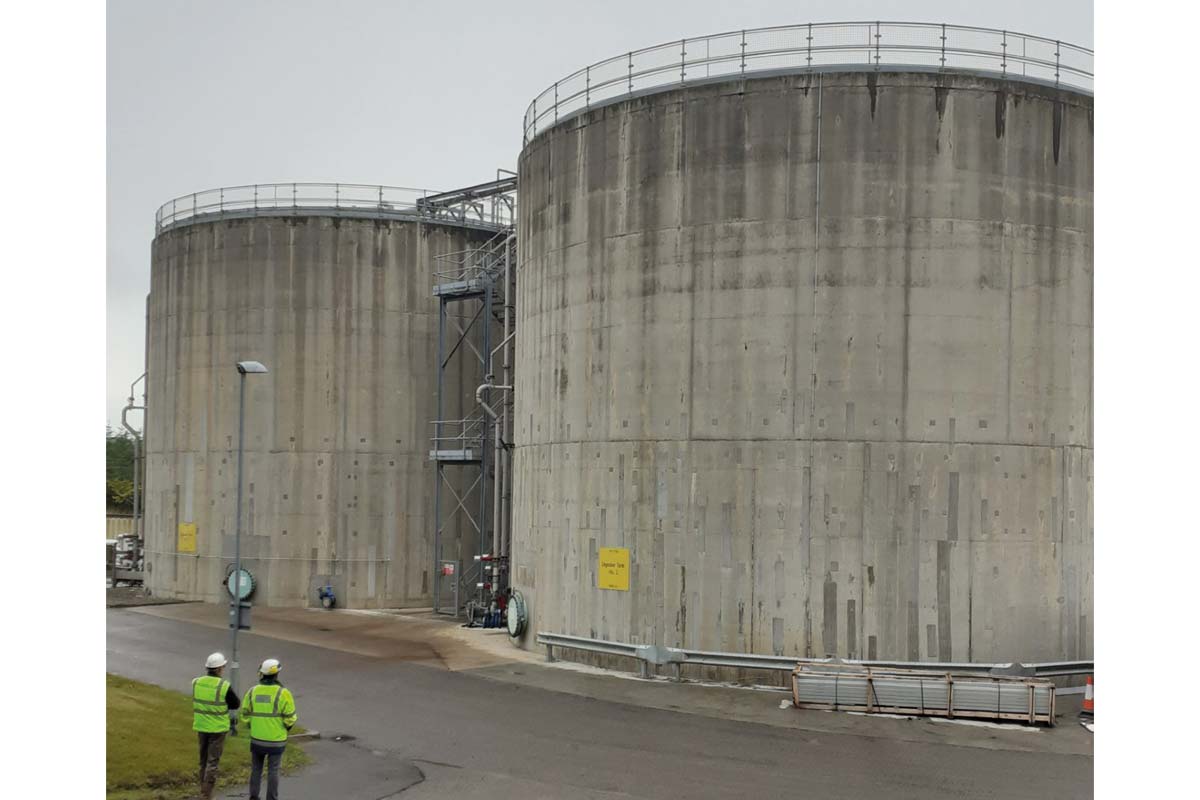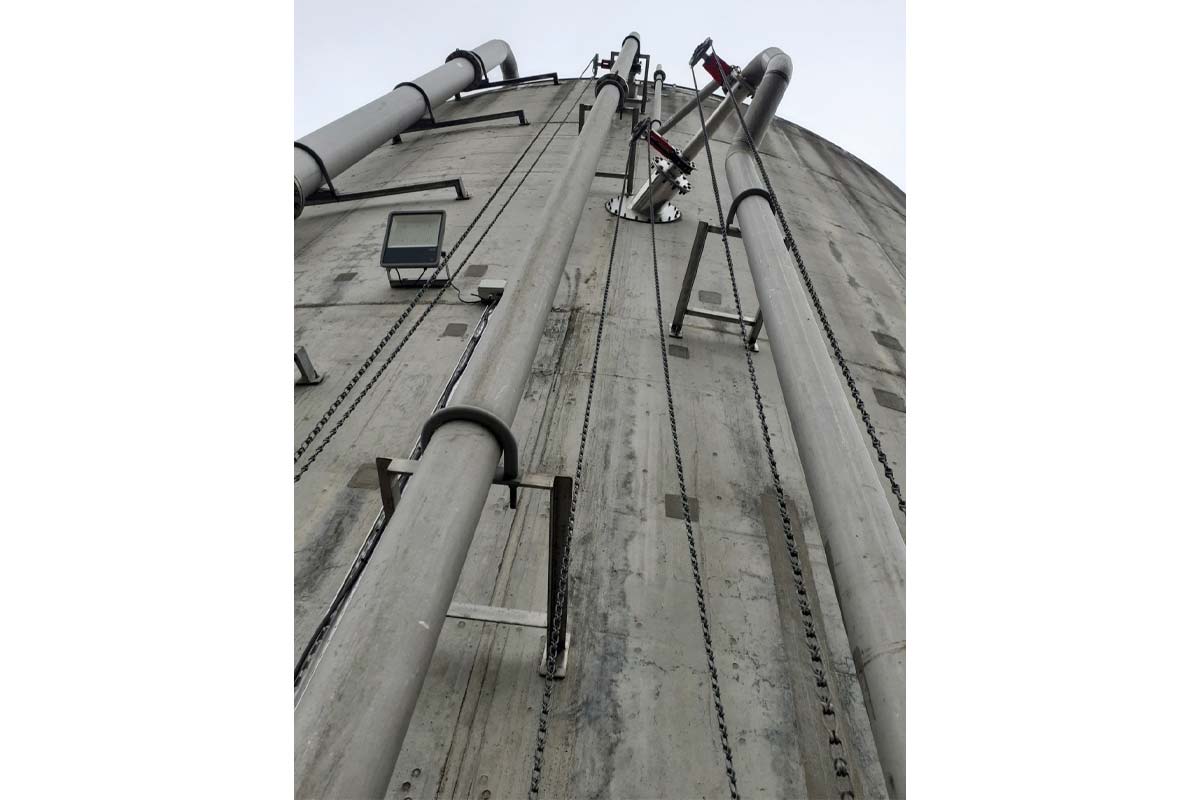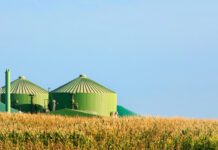Scottish Water‘s treatment centre near Aberdeen is currently leading the way as a centre of excellence for biogas production (from sludge), with its dedicated team tirelessly focused on improving efficiencies.

The Nigg Wastewater Treatment Works, which was built in 2002, has made some significant steps forward since Scottish Water took over ownership and operation in December, 2018.
It has been working with Cambi to upgrade the existing THP (thermal hydrolysis process) and importantly, installing a new digester mixing system, from Landia.
From initially producing 250 cubic metres of gas per tonne of dry solids, levels have increased; first to 350, and it has now climbed to 400 – 420.
The 400-plus figure is also being achieved without unlimited, costly power. Typically, if standard propellers were in use, around 17 watts per cubic metre would be required, but with the Landia system running at what amounts to less than 12 hours in a 24-hour period, only 7 watts per cubic metre are needed for the anaerobic digester mixing.
These latest numbers are very much the result of fine-tuning and regular dialogue, as Nigg’s Operation Team Lead, Ewan Dickie, explains:
“It is imperative that we understand the equipment and processes in front of us”, he said.
“And two years on since the latest improvements began at Nigg, Landia are always there to answer any questions we have about enhancing the mixing of our digesters”.
Prior to the upgrade, the facility had switched off the old compressor mixing system that had all too regularly caused problematical pipe blockages.
“Now,” added Ewan, “we have an extremely robust mixing system that comprehensively mixes our two 4000m3 digesters. We don’t get any problems. The mixers just sit in the background, working away. The equipment is also so much easier to maintain, because it’s externally-mounted”.
Further evidence of Nigg proving how much energy from sludge can be produced at a wastewater treatment facility is its use of the biogas and heat from the Combined Heat & Power units (CHPs) for the site’s new boiler. £0.5M pa is now being saved on fuel oil.
Since the introduction of the Landia digester mixing system and the upgrade of the Cambi THP, CO2 emissions have more than halved. The amount of biogas being produced has risen by more than 30%.
Based on the proven ongoing success of Nigg’s biogas production, Scottish Water is considering the development of a further six sludge-to-energy facilities, which would represent a giant leap towards achieving the net zero target by 2040; five years earlier than the goal set by the Scottish Government.
Simon Wrigglesworth, Operations Director for Scottish Water Grampian, continued: “We’re all for genuine innovation, but sometimes it’s not just about new technology, it can be about doing something differently. Cambi’s THP has been around for over 20 years, and the chopper pump, which is a key part of the digester mixing system, was invented by Landia back in 1950”.
He added: “It’s fair to say that at first, investing in the Landia mixing system seemed a bold move, because others were seen as a much ‘cheaper’ capital cost. But in an industry that promotes TOTEX, Landia were unmatched in providing meaningful numbers for the total cost of ownership, which showed that in the long term, they were in fact the least expensive option”.
Keeping an ever-keen eye on all the production figures at Nigg is Process Engineer, Relina Dusa. During the past two years, she has worked on optimising the mixing with different run times, from 45 minutes per hour, down to 15. Operation now rests at 28 minutes per hour; not half an hour or thereabouts, but a very specific 28 minutes.
“We had a need for proper mixing and now we have it”, said Relina. “It is important that we have experimented with different run times – and now I’m very happy with the gas yield of between 400 and 420 (cubes of gas per tonne of dry solids) that we’ve now reached. Over the past two years I have worked closely with Tony Challinor at Landia. We never have to wait for answers and feedback”.
From what has been learned and continues to be learned at Nigg, the prospect of Scottish Water developing six additional similar sites will be a landmark for the water industry in what can be achieved with sludge when optimising biogas production.
Simon Wrigglesworth added: “We’ve come a long way with Nigg already. The water industry rightly has to focus on achieving regulatory compliance, but we’re always looking at how we can maximise the generation of green energy, in order to meet our commitment to reducing and ultimately eliminating carbon”.





